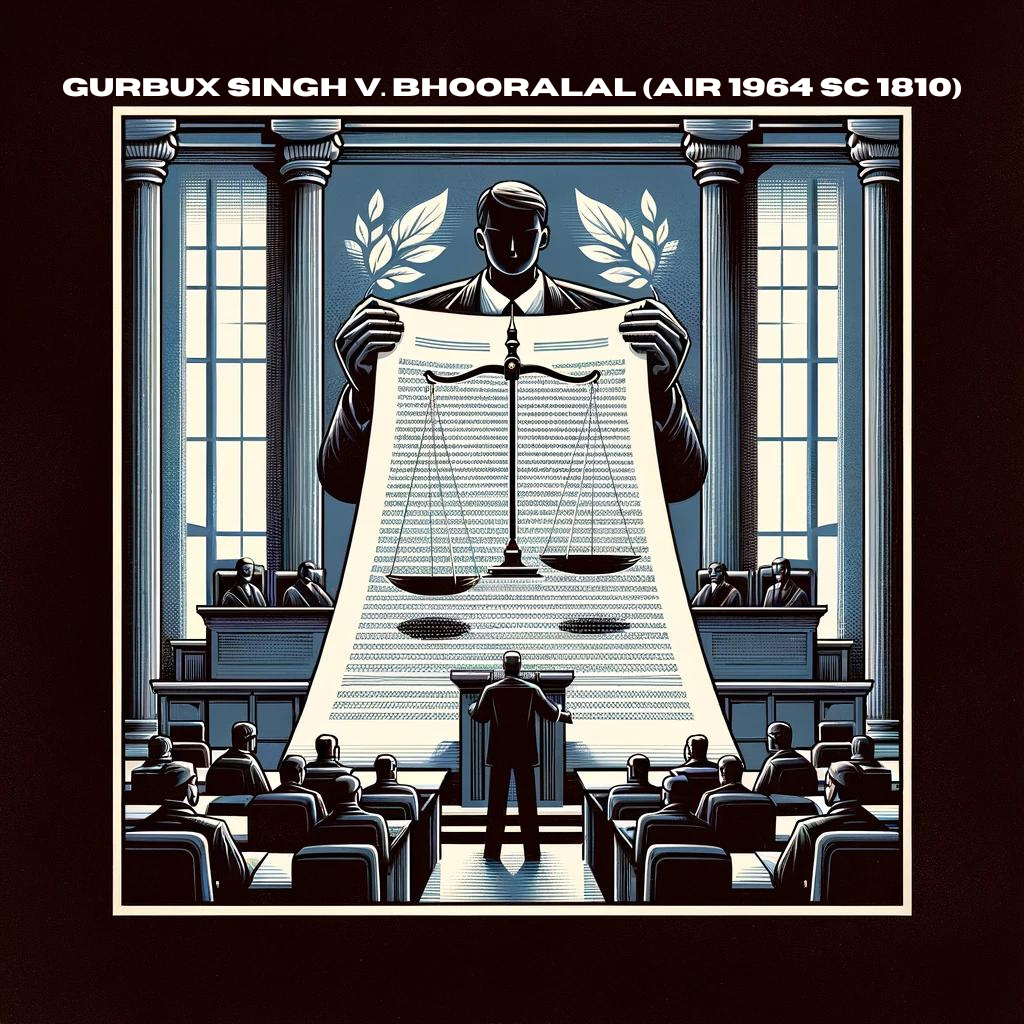
Introduction
In a significant ruling, the Supreme Court delved into the intricacies of Order 2 Rule 2 of the Code of Civil Procedure, 1908 (CPC), shedding light on the conditions under which a plea based on previous pleadings can be considered. This case centered on the dispute between Bhooralal and Gurbux over property possession and mesne profits. Gurbux attempted to bar Bhooralal’s suit by invoking Rule 2 of the CPC, arguing that he could not claim it since Bhooralal had previously filed a suit for mesne profits without seeking possession.
However, the heart of the matter lay in the procedural prerequisite that, for such a bar to be effective, the defendant must present the pleadings of the prior suit to establish the sameness of the cause of action. This case illustrates the judicial stance on the necessity of concrete evidence to uphold a plea under Order 2 Rule 2 of the CPC.
Facts
– Subject of the Dispute: Bhooralal (respondent) filed a suit against Gurbux (appellant) seeking possession of a property and mesne profits, claiming absolute ownership and wrongful possession by the appellant.
– Previous Litigation Mentioned: Bhooralal had previously filed a suit for recovery of mesne profits for the same property, which had been decreed.
– Appellant’s Defense: Gurbux challenged the suit based on Order 2 of Rule 2 of the Code of Civil Procedure, 1908 (CPC), arguing that Bhooralal had forfeited his right to claim possession by not including it in the earlier suit for mesne profits.
– Lower Courts’ Decisions: The trial court dismissed Bhooralal’s suit, agreeing with Gurbux. However, on appeal, the Additional District Judge and the Rajasthan High Court found that the plea under Order 2 Rule 2 of CPC was not valid since the pleadings of the previous suit were not produced.
– Supreme Court’s Ruling: The Supreme Court emphasized that for a plea under CPC to succeed, the defendant must prove the identity of the cause of action in both suits by presenting the pleadings from the previous suit. It held that in the absence of such evidence, the plea cannot be entertained.
– Key Points for Aspirants: Aspirants should note the importance of presenting all relevant pleadings from any previous litigation when arguing a plea based on Order 2 Rule 2 of the CPC. The case underscores the necessity for defendants to demonstrate the sameness of the cause of action. The consequences of failing to claim all reliefs entitled under the same cause of action in the initial suit.
Issues Involved
Suit’s Legitimacy Under Order 2 Rule 2 of CPC
This section probes the applicability of Order 2 Rule 2 to the subsequent suit, questioning whether the legal provision bars the current claim. This inquiry is fundamental in assessing the suit’s admissibility and the procedural integrity of claims made in civil litigation.
Cause of Action for Possession and Mesne Profits
Analyzing whether claims for possession and mesne profits stem from the same cause of action is crucial. This examination addresses the nuanced legal interpretations surrounding the cause of action. Its implications for sequential suits seeking different reliefs based on related premises.
Observations
Supreme Court’s Stand on Order 2 Rule 2 of CPC
The Supreme Court stresses the imperative for definitive proof. It specifically uses the pleadings from the previous suit to substantiate a bar under this rule. This stance clarifies the evidentiary threshold necessary to invoke a procedural bar successfully.
Conditions for a Successful Plea Under Order 2 Rule 2
Detailing the Supreme Court’s conditions for a successful plea under Order 2 Rule 2, this subsection elucidates the criteria of identical cause of action, entitlement to multiple reliefs, and procedural omission without the court’s permission. These conditions underscore the meticulous considerations required to apply this procedural bar effectively.
Read about Maqsood Ahmad vs Rahmatullah 2023 case here.
Notes
Order 2 Rule 2 of CPC
Order 2 Rule 2 of the CPC mandates the inclusion of all claims arising from the same cause of action within a single suit, barring subsequent claims on omitted or relinquished portions. This rule serves as a cornerstone for procedural efficiency and litigation economy. This ensures that related claims are adjudicated comprehensively within a single legal proceeding.
Conclusion
The Supreme Court’s judgment serves as a crucial reminder of the importance of adhering to procedural laws and the consequences of overlooking such mandates. For judiciary aspirants, this case underscores the significance of understanding and applying the provisions of the Code of Civil Procedure, 1908, which aim at avoiding multiplicity of litigation by mandating the inclusion of the entire claim within a single suit. The decision illustrates the procedural rigor that the courts adhere to and emphasizes the importance of meticulous preparation and presentation of legal documents in court.
As future jurists, it is imperative to grasp the essence of such procedural intricacies, which are often as pivotal as substantive law in the administration of justice. This case exemplifies the interplay between law and procedure. It serves as a potent reminder that a sound understanding of both substantive and procedural law forms the bedrock of effective legal practice and judicial administration. As you embark on your journey in the legal field, let this case be a beacon, guiding the importance of procedural compliance alongside substantive legal arguments in the quest for justice.

